The AVF Lab, based in Munich, has been under development since early 2021. It is designed as an Indoor Learning Lab and Demo Centre to help advance both the Vertical Farming industry and its interests worldwide via outreach through education and training. This is part of the AVF’s mandate as a global conveyor of the industry’s stakeholders, and we are extremely grateful to our members SANANBIO, GROWPIPES and Bluelab for supporting the project with their equipment.
Our Saffron Story
Did you know that it’s possible to grow the world’s most expensive spice in a vertical farm? In fact, it grows extremely well with this technology!
It is technically possible to grow lots of different types of crops in a vertical farm, the question is whether it is profitable and easy compared to field practises. Moving away from the traditional vertical leafy greens and herbs, which have a well-known good track record with vertical farmers, the AVF lab team have been researching something a little more unusual – saffron, aka the world’s most expensive spice. Saffron grows extremely well in an indoor, vertical system and has the potential to inspire great business models!
Crocus sativa, commonly known as the saffron crocus, is famous for producing saffron spice from the vivid filaments inside the plant called ‘threads’. It is used for flavouring, fragrance, dyes and medicines. Saffron has been the world’s most expensive spice by weight for a long time. This is because such a small part of the flower is used and it must be separated from the rest of the plant manually. It is more expensive than gold, and has been traded and used for thousands of years.
Experienced Agricultural Consultant and saffron specialist, Dr Ardalan Ghilavizadeh, joined the AVF Lab team in October 2021 to assist with our indoor saffron project and ensure its success. We have also collaborated to develop our first specialised indoor saffron workshop, and we are also developing a mushroom workshop – his other forte!
Ardalan says:
“The quality of saffron grown indoors is better than outdoor cultivation because we can control the conditions…also disorder and diseases hardly occur on indoor grown crops and when they do occur, we can control them more easily than outdoors.”
From purchasing to flowering, indoor-grown saffron takes just 3-4 months to produce. Interestingly, the bulbs are only irrigated twice in the whole growing cycle! They benefit from warm and humid conditions but need very, very small amounts of water.
The density of the crop can also be optimised indoors for better yields:
“The density in indoor conditions can be optimised. In our hall of 60 m we can grow 4 t of saffron bulbs. Then every 70 kg of wet flowers gives 1 kg of dried saffron, so you could say that each ton of saffron bulbs results in 2 kg of dried material. In the end it means that we can grow the same amount in 100 m2 indoors as we grown on 1 Ha of outdoor cultivation.”
JULY
Purchasing and Germination
The bulbs were purchased and kept in a controlled chamber until the beginning of Autumn. Germination was initiated by slightly altering the conditions and adding light.
OCTOBER
Building the Grow Chamber
The AVF Lab team began building a growth chamber in which to place the SANANBIO units, which were used to hold the saffron bulbs and provide light. This would allow for the temperature, humidity, light and Carbon dioxide to be precisely controlled.
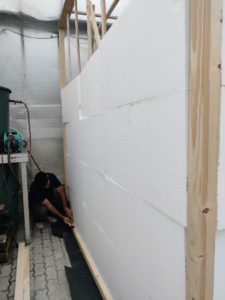
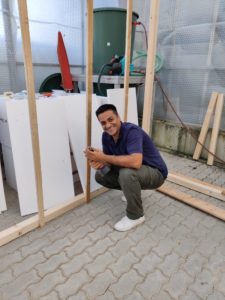
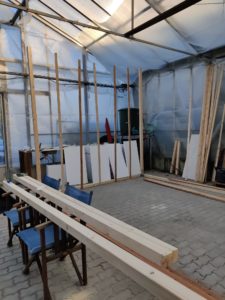
31/10/21 – First shoots!
The bulbs are cold-shocked once the shoots reach 10 cm to initiate flowering – something that’s difficult to achieve with outdoor conditions where the temperature cannot be controlled. Flowering takes about 2 weeks.
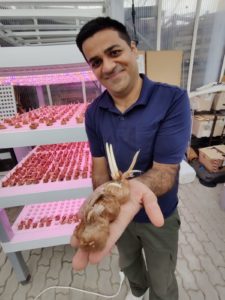
NOVEMBER
03/11/2021 – Green tips are a sure sign that flowering will happen soon!
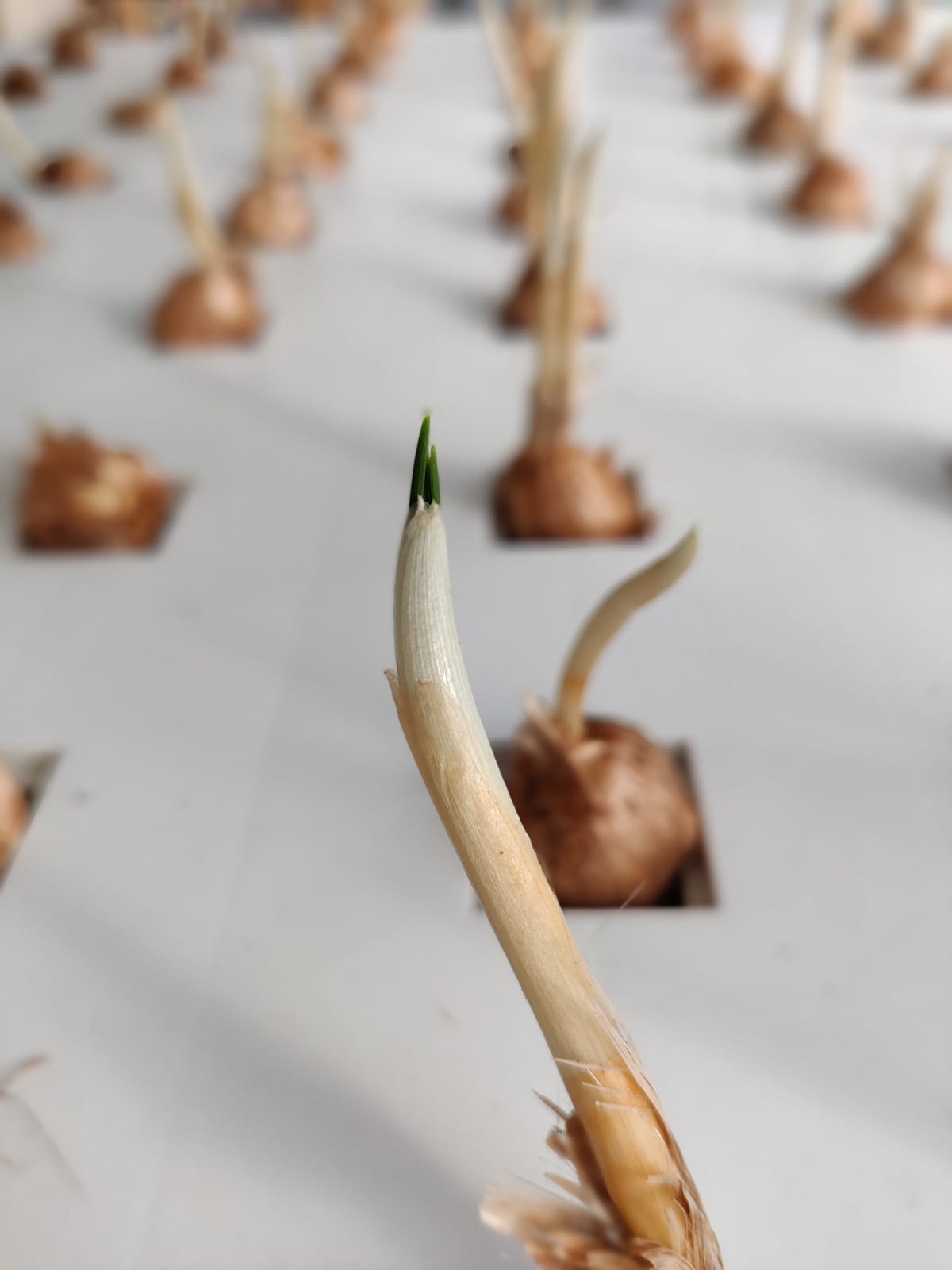
7/11/21 – Moving into the grow chamber post cold shock
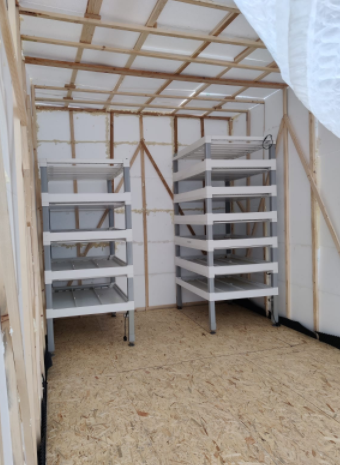
11/11/2021 – Flowering!
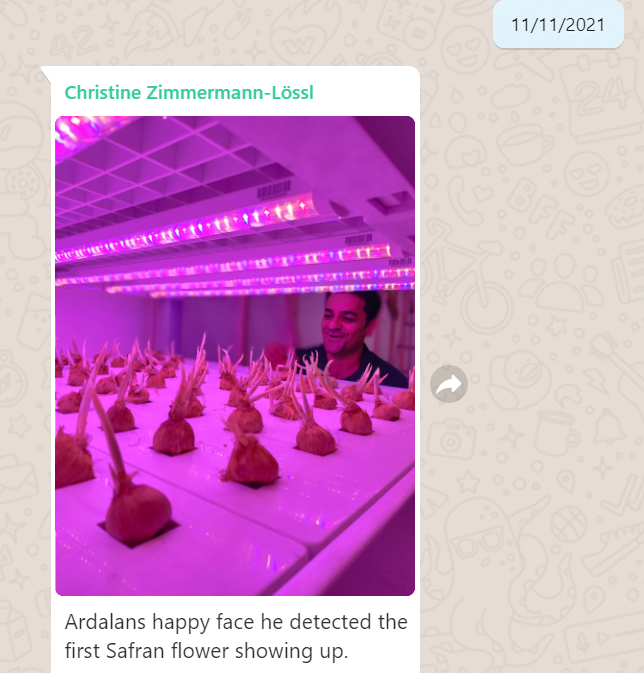
Over the next days, many more flowered. The bulbs put on quite a show – the flowers are stunning!
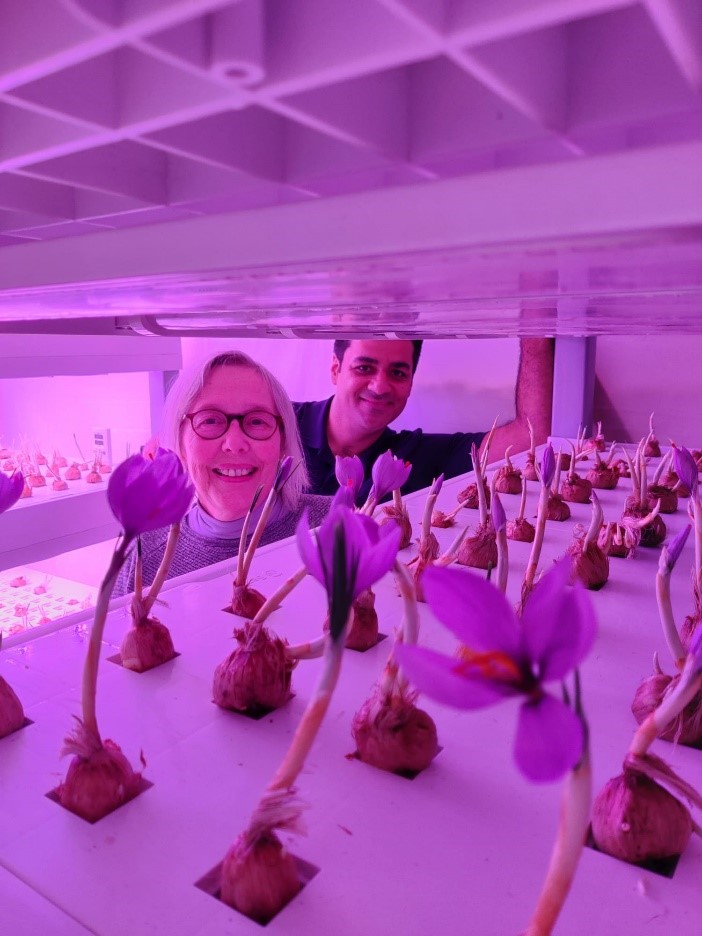
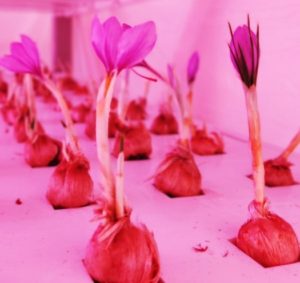
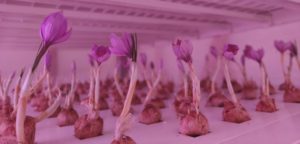
14/11/2021 – First harvest!
Each 1000 kg of bulbs gives around 1 kg of dried saffron. It takes 2 hours to dry the saffron at 45 °C.
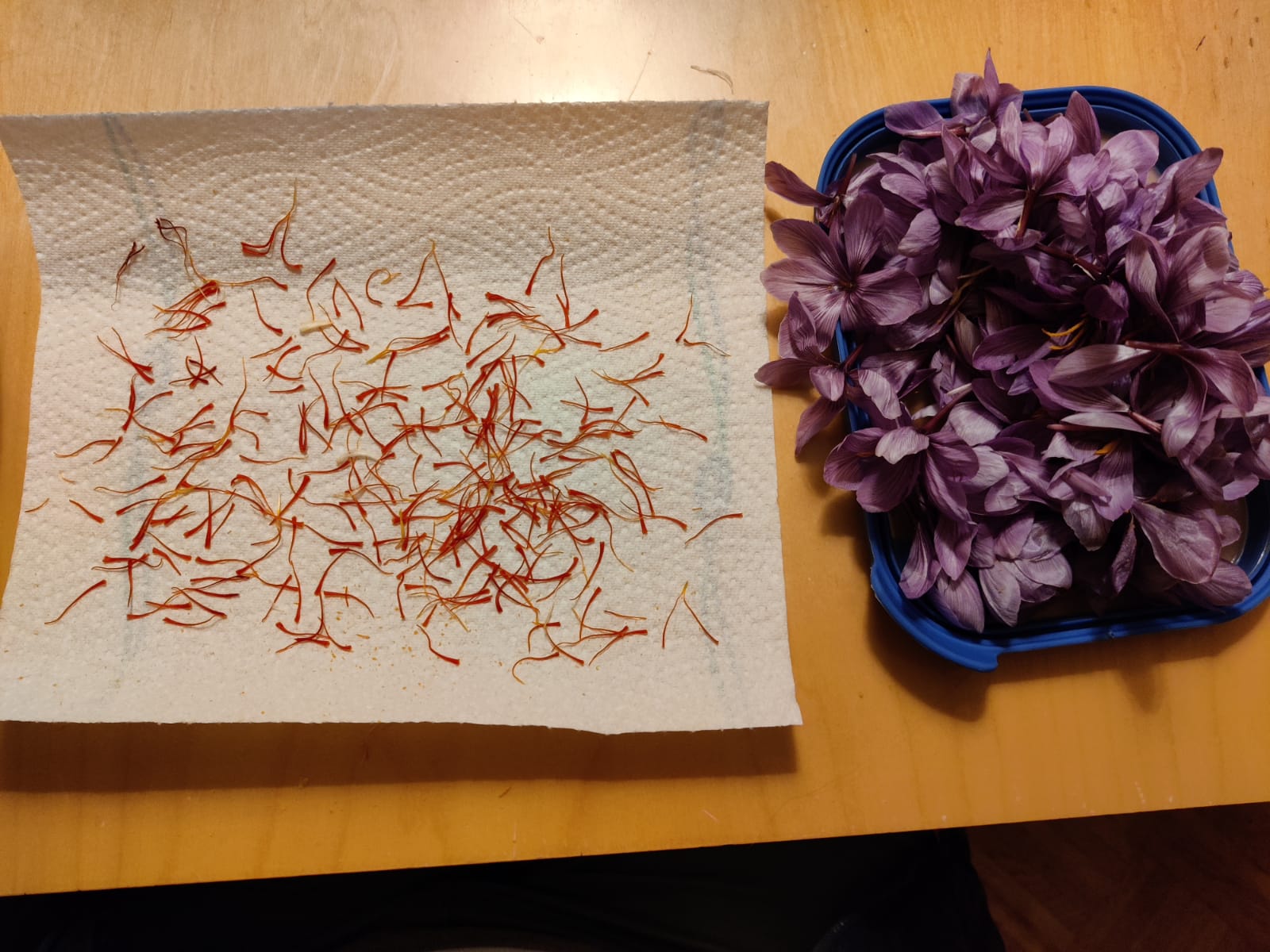
AVF Lab Workshops
The AVF Indoor Saffron Workshop took place on 15th December 2021. The attendees worked with Dr Ghilavizadeh and the AVF lab team to learn everything they needed to know about growing saffron indoors. They covered all the steps – from building the grow room to harvest and even business. After the workshop, participants receive a certificate and now know all they need to be able to build their own indoor saffron farm.
We are thrilled that our first workshop was well received and we look forward to sharing the progress of the AVF lab and future projects with you!
Stay tuned for our upcoming mushroom workshop in January!


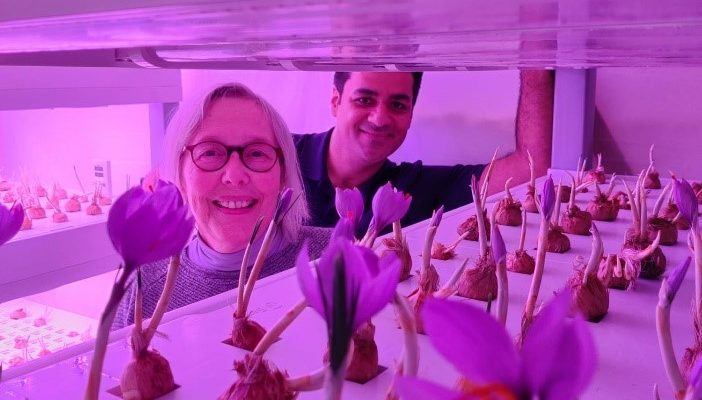
Comments are closed.